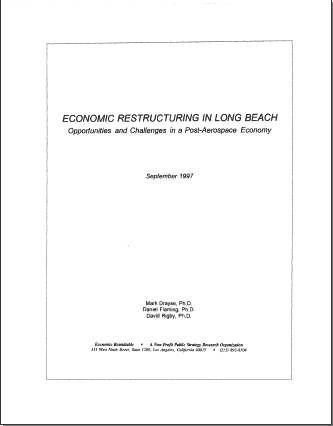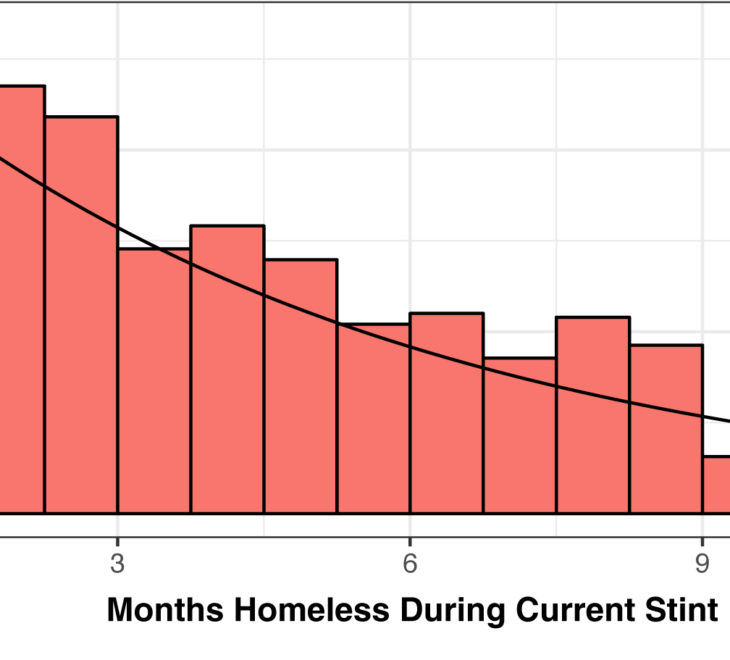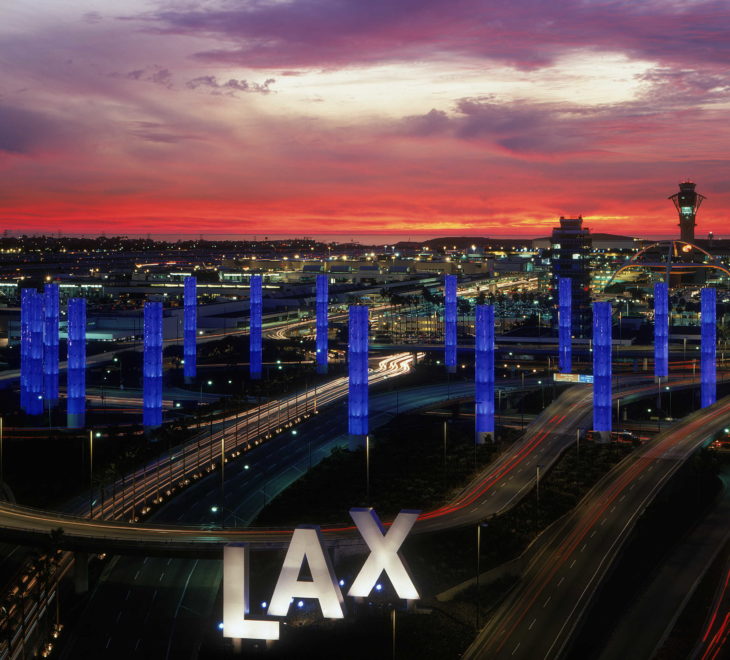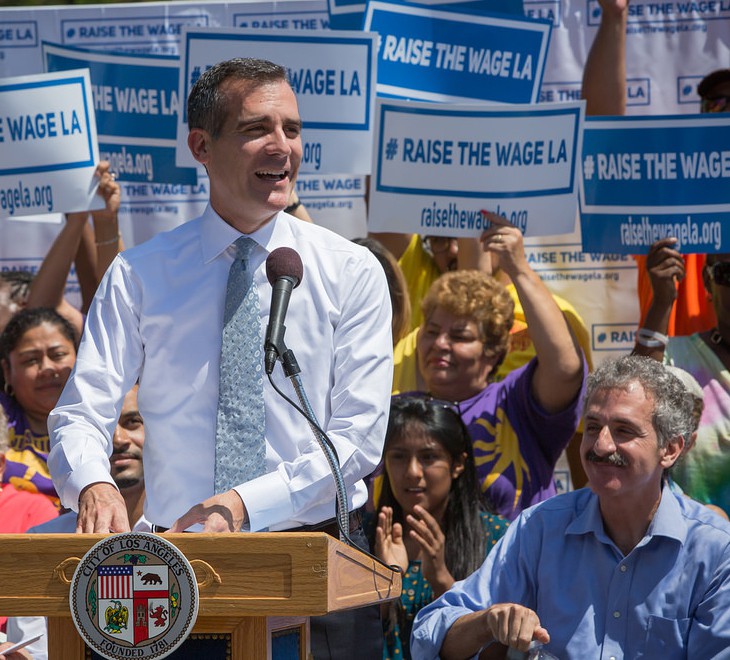 SYNOPSIS
SYNOPSIS
The City of Long Beach and other centers of aerospace production that reaped the rewards of the 1980s defense-spending boom must now confront the realities of restructuring. Since World War II, the Douglas Aircraft plant made Long Beach an important center of the US aerospace industry and dominated the local economy. In 1992, the Long Beach aerospace industry employed 36,100 workers, which was 22 percent of the city’s total employment. Almost all of these workers were employed by McDonnell Douglas. Long Beach aerospace workers earned a total payroll of over $1.5 billion, which was 30 percent of the city’s total payroll. These figures understate the total impact of aerospace on the Long Beach economy, through linkages with firms in other industries that provide inputs to the aerospace industry, and purchases of goods and services by aerospace workers.
As a result of defense cutbacks, aerospace companies have restructured their operations through mergers, divestitures, plant closings, and layoffs. Since 1991, McDonnell Douglas has laid off close to 26,000 workers in Long Beach and shifted a significant part of its military production to St. Louis. The acquisition of McDonnell Douglas by Boeing has created uncertainty regarding continued production at Douglas Aircraft, although a plausible scenario has Boeing shifting excess commercial airliner production from its Seattle area plants to Long Beach.
Unlike other centers dominated by aerospace, Long Beach has developed specializations in international trade and health services that provide a strong basis for a diverse local economy. The Port of Long Beach situates the city as a gateway in the Pacific Rim economy, creating jobs in water transportation and transportation services. In 1992, Long Beach employed 3,000 workers in these industries. The continued growth of East Asian economies will sustain and increase the international trade business in Long Beach. The city is in the enviable position of benefiting from increased production overseas, unlike communities in the US absorbing the impact of layoffs and plant closings resulting from increased competition between lower-wage producers in Latin America and Asia, and producers in the US. Also, as American companies increase exports to growing Asian markets, Long Beach benefits from the movement of goods through its port.
The City of Long Beach is a regional center for health services. The health services industries employed over 21,100 workers in 1992, 13 percent of total city employment. The city also has a specialization in medical services and health insurance. This is a strong non-defense sector of the local economy.
The restructuring of the Long Beach economy is closely related to industrial restructuring throughout the Los Angeles region, which has undergone dramatic economic changes in the last twenty years. In the 1970s and 1980s the restructuring of heavy manufacturing industries, including motor vehicles, tires, and steel, cost the region tens of thousands of well-paying jobs. This restructuring was initiated by rising oil prices and increased foreign competition as the global economy entered a new era of increased international production and trade.
The decline of traditional manufacturing was offset be the expansion of production in the aerospace industries in the 1980s, due to the increased defense expenditures of the Reagan Administration. However, with the end of the Cold War and changing budget priorities in Washington, the aerospace industry has experienced significant restructuring as firms position themselves to compete in a shrinking defense market, increase commercial operations, or both. As a result, aerospace employment in Los Angeles County has plummeted from a peak of 225,000 in 1986, to 101,000 in 1996.
The decline of aerospace employment has exposed a regional manufacturing sector dominated by low-wage employment in industries such as apparel, food products, and furniture. Each of these industries depends upon immigrant workers. The apparel industry now employs approximately one in every six manufacturing workers in the county.
Global trends have affected the development of the Los Angeles-Long Beach economy. The Second World War and the Cold War infused billions of dollars of federal defense spending into the economy through contracts to Douglas Aircraft. Today, just as the end of the Cold War contributed to declining defense spending, the new global economy has created new opportunities in economic activities related to international trade. Challenges and opportunities for Long Beach’s economic development include working with Boeing to retain production at the Douglas Aircraft facility, and leveraging the city’s specializations in international trade and health services to attract business to the city.
Unemployed Long Beach Residents: A Labor Market Analysis
There are significant differences between unemployed and employed Long Beach workers. Unemployed Long Beach workers are concentrated in relatively low-wage occupations found primarily in the retail and service industries. Blacks and Latinos are more highly concentrated in the ranks of the unemployed than they are among employed Long Beach workers.
Close to 60 percent of unemployed Long Beach workers were previously employed in occupations that are expected to experience below average rates of growth between 1990 and 1999. Only nine percent were employed in occupations expected to have above average growth between 1990 and 1999.
A few Long Beach industries emerge as significant employers of unemployed Long Beach residents. Eating and Drinking Places are major employers of janitors and cleaners and cashiers. Temporary Help and Employment agencies are major employers of general office clerks and helpers and laborers. Hospitals, colleges, and universities are also important employers of general office clerks.
A strategy that would offer more stable employment prospects for unemployed workers is to develop and strengthen training programs that are geared to employment in more secure jobs in major Long Beach industries, including Health Services and Transportation. Otherwise, many unemployed workers may re-enter the labor force in the same insecure, low-end jobs that they held previously.
Long Beach Industry Analysis
Total employment in the City was 164,000 in the third quarter of 1992. The major industry divisions in Long Beach were manufacturing (47,600 workers, 29 percent of City employment), services (41,000 workers, 25 percent of City employment), and retail trade (21,500 workers, 13 percent of City employment.
Employment and Payroll
The industries with the highest employment were:
- Aerospace (36,100 workers, 22% of total employment)
- Health Services (21,100, 13%)
- Eating and Drinking Places (9,200, 6%)
- Business Services (7,000, 4%)
- Miscellaneous Retail (4,300, 3%)
The industries with the highest employment concentration in Long Beach were:
- Water Transportation (5.5 times the employment share of this industry in Los Angeles County)
- Aerospace (5.1)
- Motor Vehicles and Equipment (1.8)
- Hotels (1.7)
- Health Services (1.6)
The industries with the highest payroll per worker were:
- Water Transportation ($44,000)
- Aerospace ($43,000)
- Trucking and Warehousing ($36,800)
- Motor Vehicles and Equipment ($35,800)
- Insurance ($35,300)
The industries with the highest percent of total Long Beach payroll were:
- Aerospace (31%)
- Health Services (13%)
- Business Services (3%)
- Wholesale — Durable Goods (2%)
- Eating and Drinking Places (2%)
Business Conditions
Long Beach has completed four annual cycles of surveying firms in the City to assess business conditions and needs. A total of 1,532 firms have responded to surveys over the four years, providing information about business trends in each firm as well as perceptions of overall business conditions in Long Beach. The large survey data base that has been created makes it possible to identify long-term trends in Long Beach’s business environment as well as make detailed assessments of conditions in a number of specific industries.
Some industries find strong locational advantages in Long Beach’s restructuring economy, while other industries are struggling to remain viable. Industries giving Long Beach the most positive ratings on business environment indicators are good candidates for business recruitment initiatives. Composite scores for twenty-one industry sectors were produced by calculating the ratio of responses by each industry to overall responses from all Long Beach firms to the same indicators. Since some of the business indicators are positive and others negative, it was possible for an industry to receive a score that was either positive or negative, depending on how firms perceived the business environment.
The business indicators used to produce the composite score and the weighting given to each indicator are as follows:
Positive Indicators Weighting Factor
- plan to expand employment 1
- plan to expand sales 1
- plan to expand building 1
- plan to expand equipment 1
- plan to expand products or services 1
- sales have increased over the past three years 6
- Long Beach is a positive location for business 8
- firm would still choose Long Beach as a business location 8
Negative Indicators Weighting Factor
- sales have decreased over the past three years -6
- industry is in recession or general downturn -3
- major customers or suppliers have closed or relocated -3
- firm may relocate outside Long Beach -4
- firm may not renew lease -2
- there are physical barriers to expansion at current site -2
- security problems have increased over the past three years -2
- firm has difficulty recruiting qualified employees -2
- firm has laid-off employees in the past year -2
The weighting factor for each indicator was multiplied by the ratio of each industry’s responses to responses from all Long Beach firms. Thus, if an industry had above-average positive responses the composite score would be positive, and if it had above-average negative responses the score would be negative.
Based on their composite scores some industries have exceptionally strong perceptions of Long Beach’s business environment, some strong, some borderline, and some negative. The seven strongest industries are listed below, ranked from highest to lowest scores.
- Water Transportation 27.38
- Finance, Insurance, Real Estate 14.55
- Wholesale, Nondurable Goods 12.21
- Transportation Services 9.60
- Business Services 6.05
- Trucking 3.13
- Food Stores, Retail 2.69
Input-Output Analysis
The payroll data presented earlier indicates job quality in different industries. It is also useful to look at the number of jobs created in industries through their production linkages with firms throughout the economy. Through input-output modeling of the county economy it is possible to estimate how many jobs are generated for each $1 million of output in each sector of the Long Beach economy. This value, called the “direct effect”, is the inverse of labor productivity and reveals how labor intensive an industry is. The direct employment figure ranges from a low of 0.92 in the petroleum industry to a high of 39.62 in the military sector of the government. The average number of jobs created by $1 million of output in each sector is 14.34. Along with the military sector, the personal services industries employ significantly more people per unit of output than average. Along with the petroleum industry, the metal mining, food, chemicals, motor vehicles, pipelines (excluding natural gas), water transportation, utilities, and real estate sectors employ fewer than 5 people for each $1 million of output.
An average of 31 jobs are created throughout the economy as a consequence of meeting a $1 million increase in final demand in each sector of the economy. Total employment creation is greatest in the credit agencies and the personal services sector. Total employment creation is lowest in the petroleum products industry.
The average industry employment multiplier (total jobs/direct jobs) is 2.12. This means that on average, for every job generated in a specific industry an additional 1.12 jobs are created in the region’s economy. Employment multipliers are highest in the insurance carriers, water transportation, petroleum products, motor vehicles, food, utilities and banking sectors. These are sectors where the direct employment effect is relatively small. Employment multipliers are relatively low in the agricultural and government sectors along with other industries where the direct employment effect tends to be relatively large.
Target Industries: Recommendations
Five industry indicators were combined to provide an overall “score” of Long Beach industries and identify sectors for targeting by the City of Long Beach in its external marketing program. Three indicators have been described above: employment concentration (based on location quotients), payroll per worker, and employment change in Los Angeles County (1992-1996). The other indicators used were (1) the Economic Roundtable assessment of Long Beach business conditions in different industries, based on our analysis of the 1994-1997 Long Beach Business Surveys, and (2) employment multipliers. The employment multiplier indicates the number of jobs generated throughout the economy by each additional $1 million output per industry. Together these variables provide a “state of the industry” summary for the target industries.
We recommend that the City of Long Beach reinforce and improve existing specializations in international trade and health services, while working to retain a presence in the restructured aerospace industry. Firms in the electronic equipment industry should be attracted to Long Beach to help diversify the local high technology sector. The city should capitalize on the locational and logistical advantages created by the port and the Alameda Corridor project to target firms in other durables manufacturing industries such as motor vehicles and equipment, due to their relatively good wages and high employment multipliers. Finally, the City should attract firms in professional and high technology services industries that pay average to above average wages and are experiencing considerable growth. The ten industries recommended for business retention and recruitment initiatives are:
- Aerospace (SIC 372, 376, 381)
- Electronic Equipment (SIC 36)
- Motor Vehicles and Equipment (SIC 371)
- Water Transportation (SIC 44)
- Transportation Services (SIC 47)
- Wholesale Trade (SIC 50 – 51)
- Medical Services and Health Insurance (SIC 632)
- Business Services (SIC 73)
- Health Services (SIC 80)
- engineering and Management Services (SIC 87)
Chapter Headings:
- Executive Summary
- Economic Restructuring of the Los Angeles-Long Beach Region
- Long Beach Business Conditions
- Unemployed Long Beach Residents – A Labor Market Analysis
- Long Beach Industry Analysis
- Input-Output Study of the Long Beach Economy
- Assessment of Long Beach Target Industries
- Industry Networks in Long Beach
- Recommendations
- Appendix












